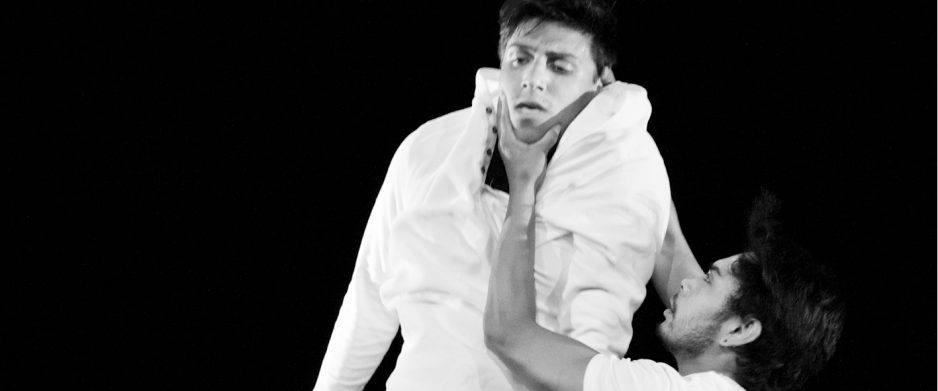Home | Blog | NAIDOC
NAIDOC
The point of reference that we were to speculate from was the Yolngu Bark Petitions. For those of you that still don’t know what the Bark Petitions are, they are declarations of unbroken self-sovereignty painted 50 years ago. Representative of several communities, they speak of unbroken lineage to their land and the negative implications the then upcoming mining proposals would have on their physical and philosophical livelihood.
They are also artworks. Yolngu law and lore are embedded in their art, from body paint, to the orange feathers woven into arm and headbands. I once came across a picture/photograph whereby Yolngu artefacts were placed side by side with law books. This was to demonstrate the significance of their art. This picture made a huge impact on my arts practice.
The two other speakers on this panel chaired by Merindah Donnely (indigenous marketing Aus Co), were Nakkiah Lui, a young playwright living in western Sydney and Djon Mundine, a well established artist and curator. Merindah set the tone of the event by painting a picture of what Sydney city once looked like, of the special and sacred sites, she spoke of marshlands and creek beds of Queen Cora and an existence before the one we recognise today. Nakkiah Lui spoke of harsh realities and her determination to reveal our brutal history. She alluded to watching warm and fuzzy works about the indigenous condition that bore no relation to her existence and the history of our existence as a whole.
Djon Mundine spoke of transmission. He stated that we are not meant to be encyclopaedias of facts and that Yolngu works in particular are not just commentaries, or narratives of a past, they are rituals designed to affirm identity. They are an intrinsic part of living; they represent working structures that underpin their society.
I am an urban indigenous woman; I live in Annandale, Sydney. My arts practice is representative of three things. Firstly it is a learning tool. When I proposed my first full length work, Wiradjourni, with a season at Riverside, Parramatta, and support from then Western Sydney Dance Action (now FORM Dance Projects), it grew out of curiosity. I had learned the basics of Yolngu kinship through my training at NAISDA, heard of divisions and sub divisions within a community, terms like moiety and skin, clans and ‘poison’ relationships. I was adopted into a family and learnt how I was related to everybody I met. I learnt how to address and behave according to my classification but, what about my kinship heritage? How did that look and operate? In Wiradjourni I explored this and speculated how remnants of these codes of behaviour might manifest themselves today.
Almost 10 years later I made a work titled Briwyant, inspired by the shimmer effect in painting. In this work I tell a story (history) of how the rivers were made, the sound tracks we danced to are embedded with song of Wiradjuri language and the set is comprised of a river made of over 2,000 meticulously laid cards that were replaced each night. In early developments of the work, all of the cast, crew, friends and family had a hand in either laying or removing them. In the final production stage of the work I remember having an argument with a collaborator over the cards; I recall a question, “Is this a dance work or a work of cards?” The hours spent in preparation of individually gluing and laying the cards were akin to the painting of dots, it was an intrinsic cultural component. Something the paying audience would never see. The day a group of artists from Yuendemu came to see the cards before a performance, crouching low to inspect them, touch them, walking along my river and looking across from a variety of angles, affirmed their importance. The fact that my mother would spend every spare minute with me maintaining them, travelling hours before dawn to kneel beside me fixing the river with pride, talking about big and small things. This is an example of my cultural transmission. With each new work I think about this component now.
Lastly as I continue to employ younger developing artists I share the significance of my arts practice, big and small discoveries. I have become, and continue to learn how to be, an elder in my own right.
The Yolgnu Bark Petitions are an amazing legacy. Former democrat senator Aiden Ridgeway spoke of them being equal to the Magna Carta. Self-determination in my arts practice means that I can continue to use my art as a vehicle for cultural perpetuity. Merindah asked what the ideal situation would be concerning Indigenous art in this country. Indigenous Arts need to be developed being mindful that the art is not about key performance indicators and bums on seats, it’s about ensuring that an unbroken lineage of existence with this land via artistic expression remains unbroken for all Australians. I would ask that audiences view with fresh eyes because indigenous art is diverse and mainstream audiences are not as exposed to what it is, represents and has the potential to become.
http://en.wikipedia.org/wiki/Magna_Carta -Wiki explanation of the Magna Carta
http://foundingdocs.gov.au/item-did-104.html -Yirrkala Bark Petitions
Photo: Lineage – Dance Bites 2013, Maylei Hunt

